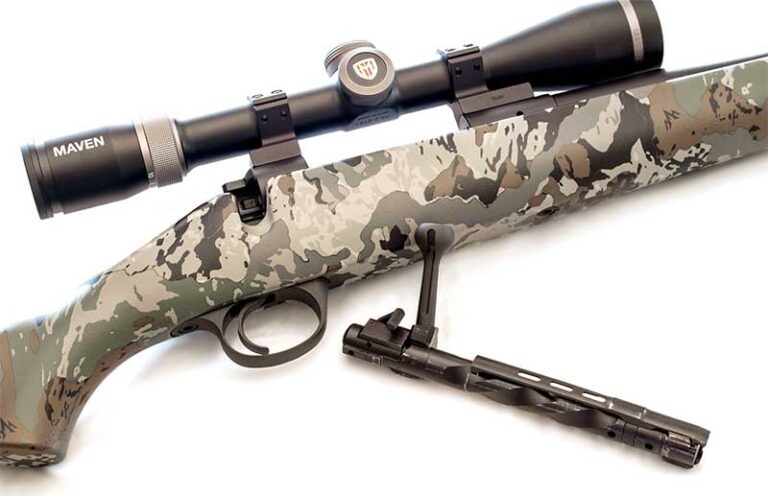
A lightweight and accurate bolt-action rifle, the author takes a closer look at the Kimber Mountain Ascent Caza.
None of us are getting any younger, and if you were to ask my legs, hips and lower back, the hills I choose to hunt seem to be getting steeper. Despite having crossed the half-century mark, I refuse to allow my native Catskills and Adirondacks to intimidate me to the point where I avoid hunting them. Though the terrain may be rugged, here in New York we have oxygen in our mountains—as opposed to the Rockies, where oxygen comes at a premium—and while the game might be sparse, it’s an iconic experience.
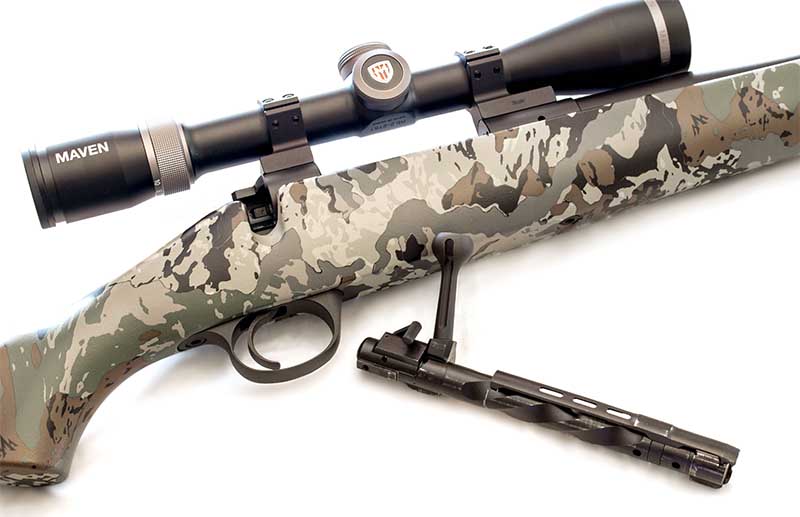
Rifle weight has often been a factor for those who hunt the rugged terrain, whether it be sheep hunters on the scree slides of Alaskan mountains or anyone who hauls their gear on their back when venturing into the few remaining wild places left on Earth. If I’m on relatively flat ground—say, in the Hudson Valley of New York, the Great Plains of the Dakotas or eastern Wyoming and Colorado or even the vast majority of Africa—I don’t mind a bit of weight to my rifle. But once things start to get steep and rugged, I want the least amount of weight on my back and shoulders as possible.
Kimber—a rifle company originally based entirely in my home state of New York—has long prided itself on their lightweight rifles. Yes, the Kimber Talkeetna and Caprivi big-bore rifles are both built in the common weight ranges, but there are many models that swung in the welterweight division.
The Kimber Montana, and especially the Kimber Adirondack with its short barrel, felt like a helium balloon on the shoulder, yet was still manageable when shooting. Scaled-down actions, replete with the features required to be considered controlled-round-feed, mated to slim barrels and lightweight synthetic stocks add up to an accurate combination that will not be felt during the process of packing out a deer from those remote and rugged locations.
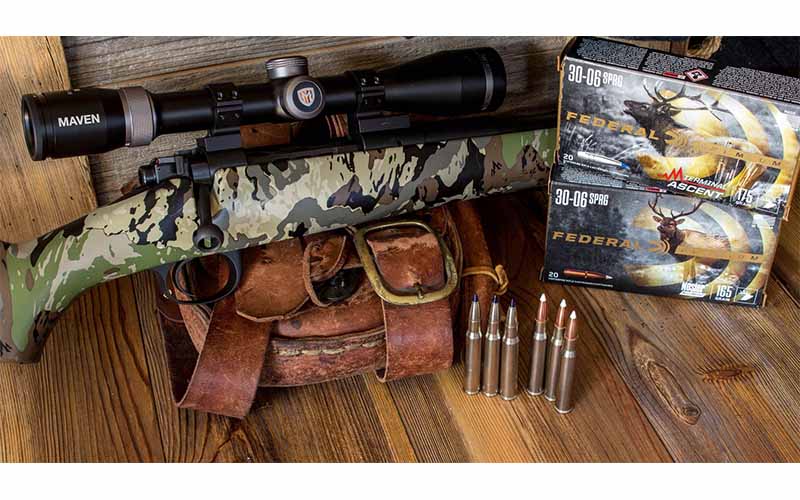
The Adirondack model produces a ton of muzzle blast from its short barrel—though if used as a hunting rifle wouldn’t be unmanageable—and even the Montana felt a bit like a willow wand when it came to settling down for the shot. Looking at the various Kimber rifle models through the years, I feel they’ve come to their best balance of weight and portability with their Mountain Ascent Caza rifle.
The Reign Of The Caza
With the naked rifle coming in at just over 5 pounds, depending on chambering, Kimber offers a sensible mountain rifle here, with all the features I’ve come to appreciate. Despite the light weight, the Mountain Ascent Caza balances well. And where most companies will rely on a short-action receiver to help reduce weight, my test rifle featured Kimber’s 84L long action and was chambered in the universal .30-06 Springfield.
With a 24-inch featherweight stainless-steel barrel, fluted for 8 inches just ahead of the chamber and with a 2-inch muzzle brake (thread protector included), the Mountain Ascent will give full house velocities. While my ears are certainly damaged from years of gun fire and loud drummers, a muzzle break on a rifle this light makes sense. I often wear a combination of earplugs and shooting muffs at the backyard range—especially while testing a rifle with a brake—but in the field I’m not comfortable with hearing protection. I’m not a fan of brakes, but physics are physics, and on a lightweight mountain rifle like the Mountain Ascent, it’ll help you place a shot better than if you’re dealing with snappy recoil.
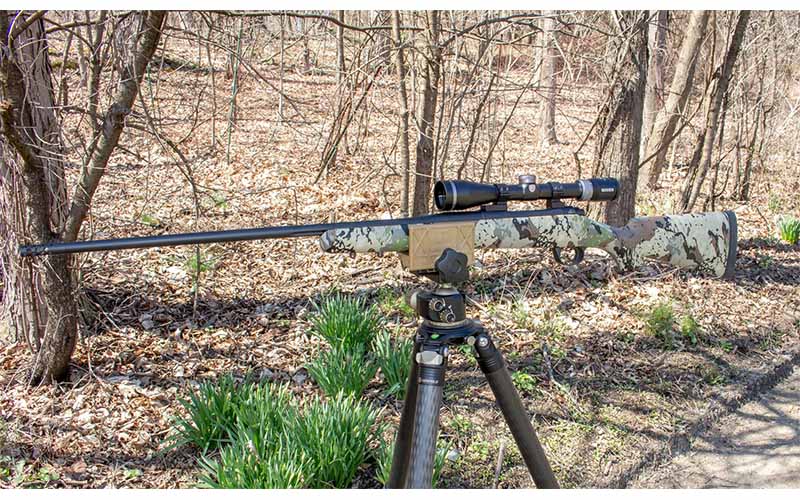
The 84L action is what I’ve often referred to as a mini-Mauser; it’s a controlled-round-feed design with the non-rotating claw extractor, just in a scaled-down configuration. I measured the bolt body at 0.585 inch in diameter—a typical Mauser 98 bolt body will measure right around 0.700 inch—so there’s a significant reduction in action diameter. And to further reduce weight, Kimber has fluted the bolt body. It uses a two-lug bolt face (the Mauser 98 has a third lug on the bottom rear of the bolt body) and a 90-degree bolt throw.
The 84L action features a wing-style three-position safety highly reminiscent of the Winchester 70 design, with forward to fire, middle position being safe but able to work the bolt for safe loading and unloading, and rearward being safe as well as preventing the bolt from moving. When the safety is moved forward, putting the rifle into battery, there’s a small red dot visible where the safety wing meets the bolt body, indicating the rifle is hot. The 84L action is pillar bedded into the stock, and the action and barrel are coated in Kimber’s proprietary non-reflective KimPro II black finish.
The Mountain Ascent comes with an adjustable trigger, which Kimber indicates comes set at a weight of 3.5 pounds. Using my Lyman Trigger Pull Gauge, my test rifle’s trigger broke consistently at 2 pounds, 8 ounces. The shoe is wider than that of most rifles, measuring ⅜-inch wide and offering a nice feel during the squeeze—and breaking crisply without creep or overtravel. I really liked the way this trigger performed during accuracy testing, as well as from field positions.
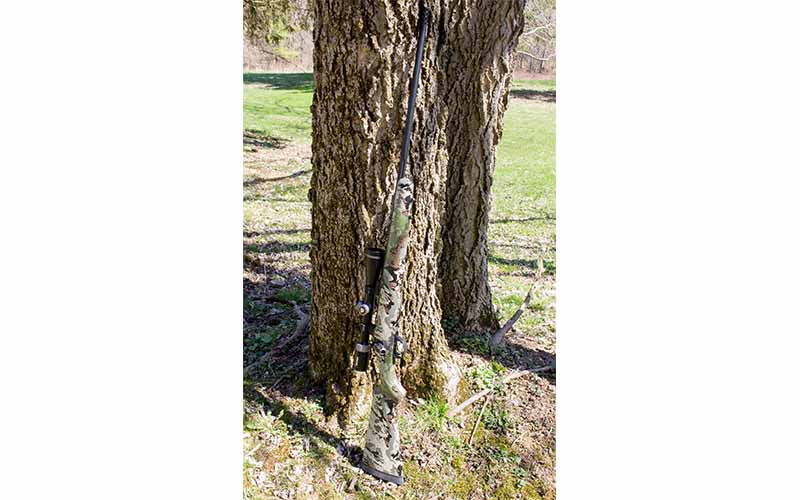
The Mountain Ascent has a blind magazine, holding four rounds down, and a small polymer trigger guard with one action screw rounds out the union of action and stock. And speaking of stocks, the Mountain Ascent has an ergonomic, ambidextrous reinforced composite stock, wrapped in the Pnuma Caza camo finish. The Caza is, to my eyes, a nice blend of the digital camouflage color scheme, blended into smoothed patterns that are appealing to the eye.
Without cheekpiece, or any sort of checkering or distressed area to offer a better grip, the Mountain Ascent Caza stock feels very good in the hands. With a sloping pistol grip, which keeps the fingers of the trigger hand more parallel than perpendicular to the barrel, the Kimber stock is (apparently) symmetrical, giving the shooter everything he or she needs, with nothing they don’t.
The stock features one rear sling swivel stud and two at the forend, giving the ability to attach a bipod to the rifle. A 1-inch Pachmayr Decelerator recoil pad takes the thunder out of the .30-06, even from the heaviest of loads, and I measured the length of pull for this rifle at 13⅝ inches.
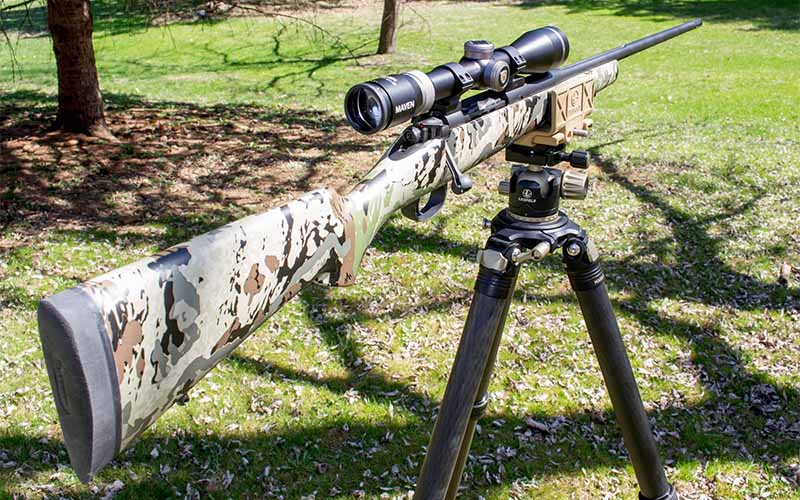
The Tale Of The Targets
Kimber offers a sub-MOA guarantee with the Mountain Ascent and provided two test targets to prove the fact that the rifle left the shop meeting those parameters. And while the targets were printed with 168-grain match-style ammunition, I also feel the beauty and versatility of the .30-06 Springfield is the variety of bullet weights offered to the hunter.
So, for this test, I grabbed five different bullet weights across the .30-caliber spectrum to see how the Mountain Ascent would handle them. Because of the extremely thin barrel contour, combined with the fact that this is definitely a hunting rifle, I limited group size to three shots.
From light to heavy, I tested Federal’s 150-grain Fusion load, Federal’s 165-grain Nosler AccuBond load, their 175-grain Terminal Ascent ammo, Norma’s 180-grain BondStrike ammo, and Federal’s 200-grain Trophy Bonded Bear Claw, giving a range of projectiles suitable for deer and similar-sized game, all the way up to grizzly bears.
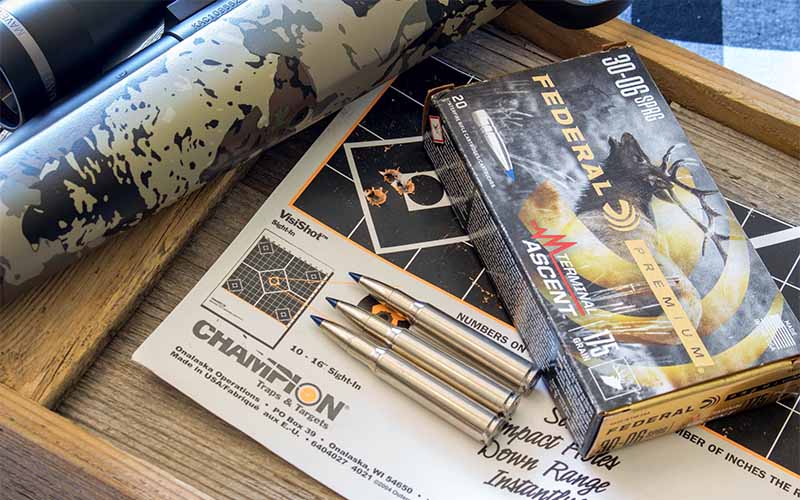
The Kimber muzzle brake tamed even the 200-grain load’s recoil, and though there was considerable muzzle rise—again, physics is physics—shooting the Mountain Ascent at the bench wasn’t an issue.
The rifle showed a definite preference for 165- to 180-grain bullets, delivering excellent accuracy with the 175-grain Terminal Ascent load and keeping all loads in this bullet range inside of ¾ MOA. The 200-grain Trophy Bonded Bear Claws averaged 1 MOA, with the 150-grain Federal Fusion load coming in last with an average group size of 1.12 MOA. Even the worst group is more than accurate enough for any hunting scenario.
There were no issues at all with feeding, extraction or ejection, and in spite of the diminutive action, I found the 84L action to be completely satisfactory. The Mountain Ascent trigger gave a very natural feel, and the Maven RS.2/Talley ring combo allowed good cheek weld.
Tinkering with some offhand shots, the lighter weight of the Kimber rifle did require additional time to steady the crosshair, but when using a natural rest or a set of shooting sticks, it posed no real issue.
Final Thoughts
If a lightweight rifle is in your future, and the carbon-fiber-wrapped barrels aren’t your cup of tea, then I’d take a good look at Kimber’s Mountain Ascent. Among lightweight guns, I like the features they’ve packed into this rifle. I’ve always been a fan of controlled-round-feed actions, and I’m a sucker for a good trigger.
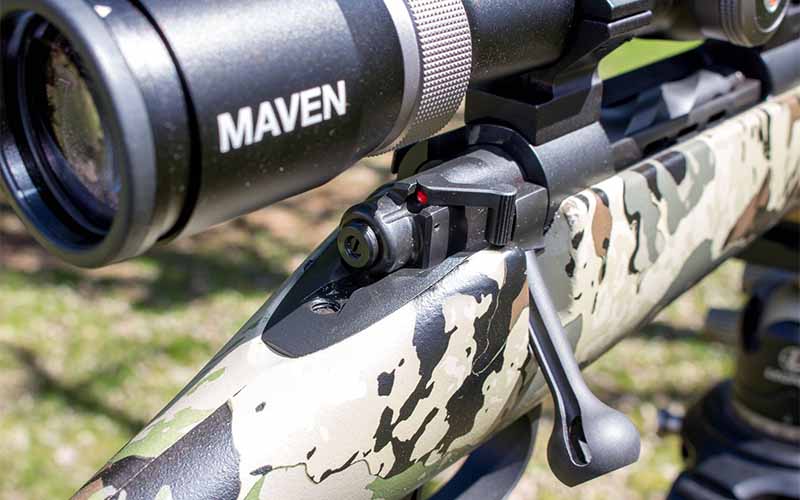
If I had to pinpoint any issues with the rifle, the safety felt a bit snug out of the box—though it did smooth out by the time I was done with my testing—and the length of pull is a bit too short for yours truly. The latter comment, however, is common to almost all American rifles: I find them all collectively short at the standard 13½- to 13¾-inch length-of-pull. Extend that dimension to 14¼ inches, and I immediately take a different posture when behind the trigger and I shoot better.
So, Kimber, if you’re listening: Maybe you could offer an extended length-of-pull on your stocks?
Overall, I’d have no problem dragging a Kimber Mountain Ascent into the mountains, across a prairie or into a deer blind. Speaking candidly, there might be instances where the rifle’s weight might influence me to take a different approach to getting steady for the shot, but that fact is mitigated by the gun being an absolute joy to carry.
Congratulations, Kimber, you’ve done a good job with this one.
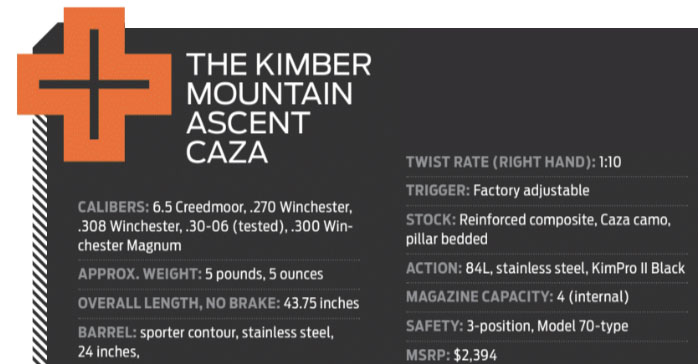
Editor's Note: This article originally appeared in the September 2023 issue of Gun Digest the Magazine.
More Hunting Rifle Reviews:
- Royal Blood: Mauser M-18 Review
- Mossberg Patriot LR Tactical Review
- Springfield Armory 2020 Waypoint Review
- Shaken, Not Stirred: Heym Martini Express Review
- Marlin 1895 Trapper Review: The Hunting Panther

Next Step: Get your FREE Printable Target Pack
Enhance your shooting precision with our 62 MOA Targets, perfect for rifles and handguns. Crafted in collaboration with Storm Tactical for accuracy and versatility.
Subscribe to the Gun Digest email newsletter and get your downloadable target pack sent straight to your inbox. Stay updated with the latest firearms info in the industry.

![Best Concealed Carry Guns In 2025 [Field Tested] Wilson Combat EDC X9S 1](https://gundigest.com/wp-content/uploads/Wilson-Combat-EDC-X9S-1-324x160.jpg)


![Best 9mm Carbine: Affordable PCCs [Tested] Ruger Carbine Shooting](https://gundigest.com/wp-content/uploads/Ruger-Carbine-Shooting-100x70.jpg)
![Best AR-15: Top Options Available Today [Field Tested] Harrington and Richardson PSA XM177E2 feature](https://gundigest.com/wp-content/uploads/Harrington-and-Richardson-PSA-XM177E2-feature-100x70.jpg)
